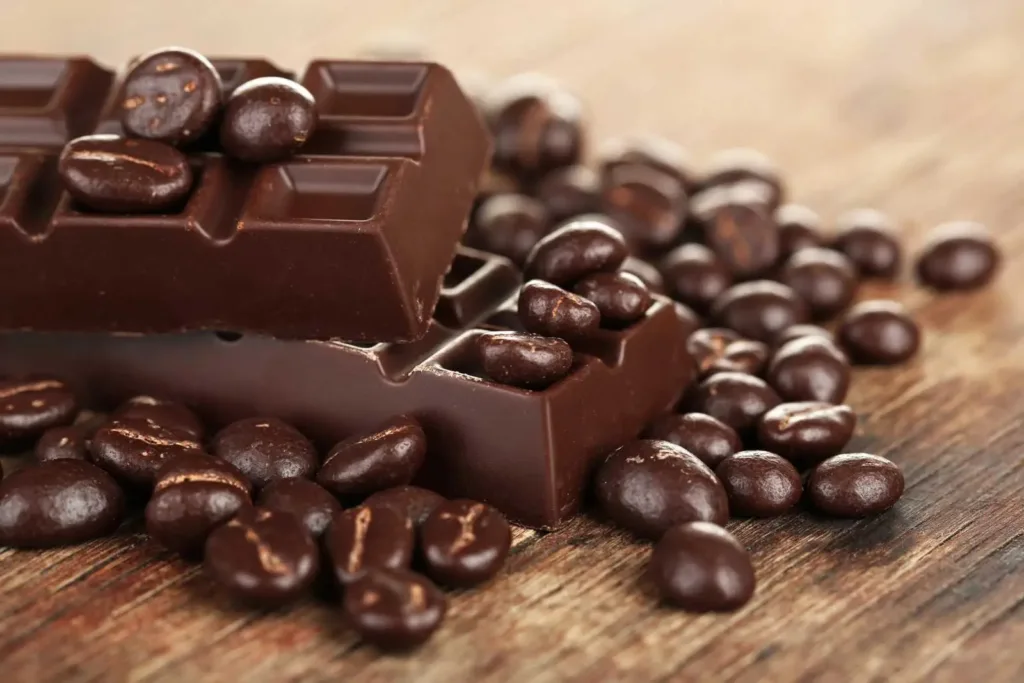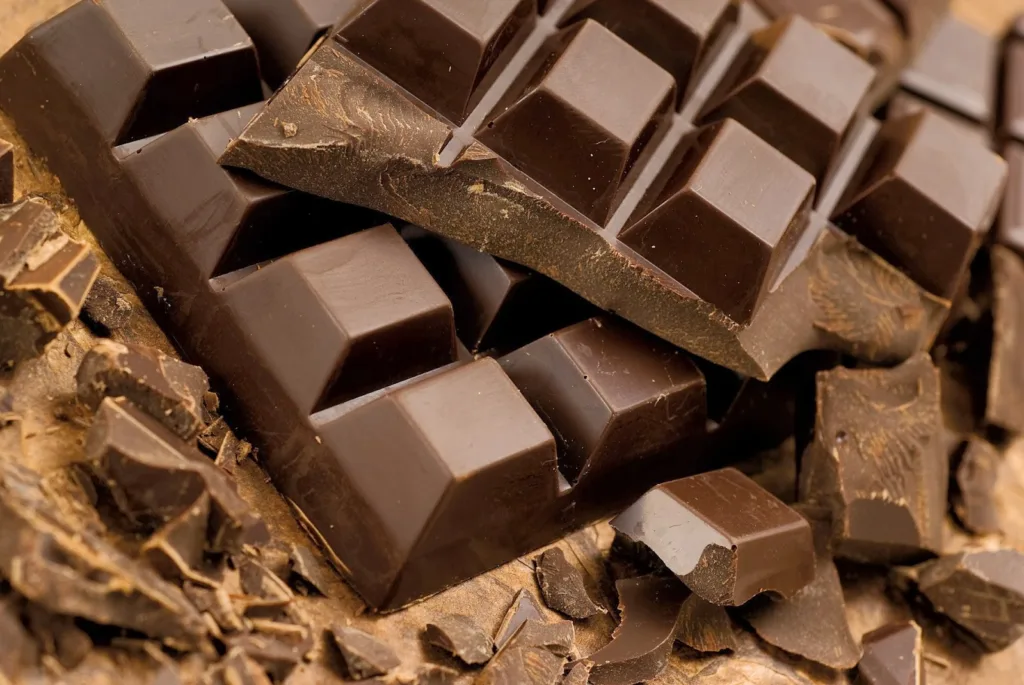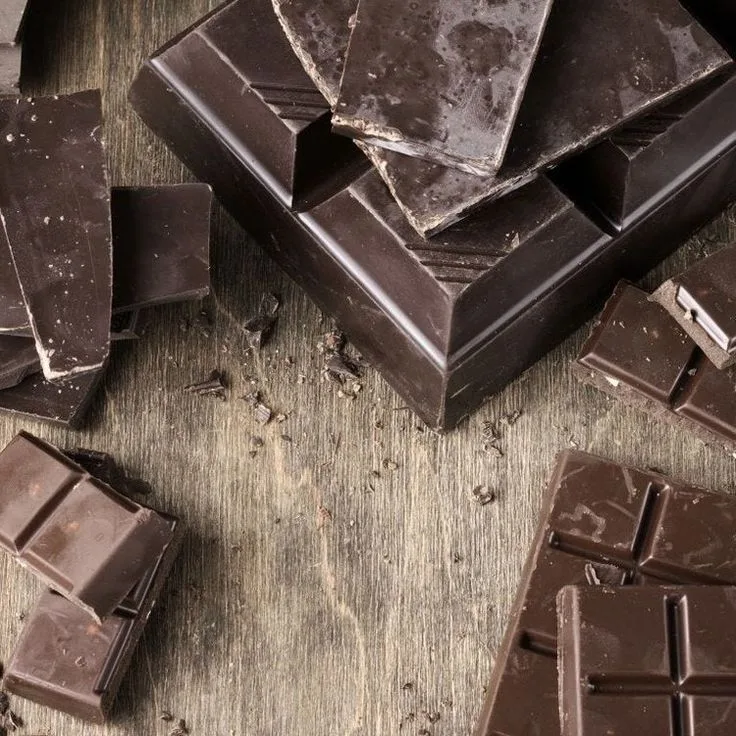Chocolate. Just the word itself conjures up images of sweet indulgence and tasty treats. But could this decadent delight actually help with weight loss? Surprisingly, the answer is yes! When enjoyed in moderation and balance, the right kinds of chocolate offer some intriguing health benefits. Let’s embark on a journey through the world of chocolate to uncover how certain varieties can be part of a healthy diet and lifestyle.

Introduction
The Surprising Path to Weight Loss: Chocolate!
For most people, chocolate is a guilty pleasure reserved for cheat days or special occasions. The thought of incorporating chocolate into a weight loss plan seems counterintuitive. But emerging research shows that not all chocolate is created equal. The cocoa bean is actually packed with beneficial plant nutrients and antioxidants that can aid weight management when consumed mindfully. Dark chocolate in particular contains health-promoting compounds not found in milk or white chocolate varieties. Could a daily dose of dark chocolate be the surprising secret to shedding pounds? science says it’s possible!
Why Chocolate?
Chocolate provides a unique blend of indulgence and nutrition. Of course, chocolate has calories and fat like any food. But cocoa beans grow on trees and are packed with polyphenols, flavanols, fiber, iron, magnesium, copper, manganese and more. Cocoa teems with antioxidant and anti-inflammatory benefits. And many studies link cocoa flavanol consumption to improved heart and brain health. When it comes to weight loss, chocolate’s combination of protein, fiber and beneficial fats promotes satiety and satisfaction. The key is choosing the healthiest options in moderation.
The Balance: Decadence and Health
Chocolate occupies a singular place between food and medicine. The Aztecs viewed chocolate as a health elixir long before its sweet side took hold. Today, chocolate is adored for its melty, creamy deliciousness. But with mindful consumption, we can enjoy chocolate’s taste while still reaping its nutritional rewards. The key is balance. When eaten in controlled portions, higher cacao dark chocolate and even some milk chocolate can perfectly satisfy a craving and deliver health perks at the same time. Consider chocolate a bonus boost, rather than the main event, in your diet.
A Journey Through Chocolate Varieties
There are countless types of chocolate out there, from milk to dark and everything in between. On our journey to understand chocolate’s role in weight loss, we will explore the major categories:
- The basics of cocoa and its nutritional virtues
- The benefits of bold, bitter dark chocolate
- How to find healthy milk chocolate for when you want something sweeter
- What sets white chocolate apart from other chocolates
- How chocolate can aid appetite, metabolism and weight management
Let’s indulge in this decadent topic and discover how chocolate can be an unexpected helper on the path to a healthier you!

The Cocoa Connection: Understanding the Basics
Cocoa beans are the essence of all chocolate. Tracing chocolate back to its raw ingredient reveals the source of chocolate’s health effects. Here’s an overview of cocoa types, nutrition and special compounds:
Types of Cocoa
There are three main varieties of cocoa beans:
- Forastero – The most widely grown, comprising 80% of the world’s cocoa. It has a bold, fruity flavor.
- Criollo – Considered the finest and rarest cocoa, with delicate aromas and flavors.
- Trinitario – A hybrid of the first two, combining Forastero’s hardiness with Criollo’s distinctive taste.
No matter the variety, all cocoa beans impart chocolate with nutritional elements absent from other sweets.
Cocoa’s Nutritional Value
In its raw form, cocoa is very low in sugar and rich in fiber, healthy fats, protein, and minerals like iron, magnesium and zinc. Cocoa is a source of beneficial phytochemicals, mainly catechins and proanthocyanidins with antioxidant effects. A 1-ounce serving of dark chocolate with 70-85% cocoa provides:
- 67% RDA for iron
- 58% RDA for magnesium
- 89% RDA for copper
- 98% RDA manganese
Plus 3 grams of fiber and 2 grams of protein. This nutrient density contributes to chocolate’s pleasing and satisfying qualities.
The Role of Flavanols
Chocolate’s health halo stems largely from flavanols, the main type of flavonoid found in cocoa beans. Flavanols such as epicatechin appear to help lower blood pressure, improve vascular function, boost cognitive function and reduce inflammation. These benefits emerge with daily consumption of small servings of flavanol-rich dark chocolate. Flavanol content is highest in minimally processed cocoa and chocolate with at least 70% cocoa.
So the key active ingredient for chocolate’s health effects is flavanols, which abound in dark varieties. Now let’s explore the specific virtues of delectable dark chocolate.
Dark Chocolate Delights: Bitter Elegance for Weight Watchers
Could a few squares of dark chocolate help drop unwanted pounds? Growing evidence suggests that dark chocolate may boost satiety, burn fat and curb cravings. Here’s how to choose the best dark chocolate for weight goals:
The Benefits of Dark Chocolate
Multiple studies find that eating dark chocolate:
- Provides satiety, satisfaction and suppresses appetite due to chocolate’s fiber, fats and flavanols. This promotes portion control.
- May protect against insulin resistance and diabetes risk.
- Boosts metabolism slightly due to chocolate’s caffeine and catechin content.
- Improves gut microbiome diversity which supports weight management.
Daily consumption of 1-1.5 ounces of dark chocolate with at least 70% cocoa may offer these benefits. The key is moderate portions that fit daily calorie needs.
How to Choose the Right Dark Chocolate
For weight control and health aims, look for:
- Cocoa percentage of 70% or higher
- Ingredients of only cocoa beans and small amounts of sugar and cocoa butter
- No added vegetable oils or unnecessary emulsifiers
- Organic or sustainably grown cocoa
- No more than 2-3g sugar per serving
Ideally choose chocolate with cocoa sourced from South America which has the highest flavanol content.
Dark Chocolate Recipes
- Chocolate avocado mousse – Blend 2 ounces dark chocolate with 1 avocado and spices like cinnamon and cayenne for a creamy, filling mousse.
- Dark chocolate trail mix – Melt 1 ounce dark chocolate and mix into 1/4 cup nuts and dried fruit for an antioxidant and protein-packed snack.
- Chili dark chocolate bark – Pour 2 ounces melted unsweetened chocolate mixed with chili powder onto a parchment-lined baking sheet. Top with crushed nuts or seeds before cooling for a spicy and crunchy treat.
Dark chocolate is a slimming treat. Now let’s see if milk chocolate can fit into weight loss plans too.

Milk Chocolate Marvels: A Sweet Treat with a Twist
Milk chocolate is arguably the most popular chocolate variety. With its smooth, creamy texture and sweet flavor, milk chocolate makes the perfect comfort food. But can it align with weight goals? Here’s how milk chocolate compares and what to choose:
Milk Chocolate vs. Dark Chocolate
Compared to dark chocolate, milk chocolate has:
- Less antioxidants and flavanols due to lower cocoa and higher sugar content
- More calories, fat, and carbs thanks to added milk and sugar ingredients
- Still some iron, magnesium, zinc and other minerals just in smaller amounts
So while milk chocolate loses some of cocoa’s concentration of nutrients, it still provides benefits over candy and other sweets.
Moderation is Key
The challenge with milk chocolate is limiting portions. Milk chocolate’s creamy sweetness makes it easy to overeat. Stick to a 1-ounce serving as part of a meal or snack to keep calories in check. Choose higher cacao milk chocolate bars with at least 30% cocoa whenever possible. Pair milk chocolate with protein like nuts or yogurt to increase satiety.
Milk Chocolate-Based Desserts
- Chocolate banana protein smoothie – Blend milk chocolate chips into a banana, yogurt and nut butter smoothie for extra richness.
- Chocolate peanut butter energy balls – Mix milk chocolate chips with oats, nuts, seeds and peanut butter then roll into balls for a protein-packed bite.
- Chocolate avocado mousse – As with dark chocolate above, blend milk chocolate into avocado with cinnamon for a healthy pudding.
Milk chocolate can absolutely complement a diet, when you watch serving sizes. Now let’s explore white chocolate’s place, if any, in healthy eating.
White Chocolate Wonders: Is It Really Chocolate?
White chocolate is a confection adored for its intense sweet creaminess. But with little to no cocoa solids, can white chocolate deliver any of cocoa’s nutritional perks? Let’s break down what’s unique about white chocolate:
What Sets White Chocolate Apart
- White chocolate contains no cocoa solids, only cocoa butter. It offers none of cocoa’s antioxidant flavanols.
- Cocoa butter provides fatty acids like stearic and oleic acid, but at high calories.
- Most white chocolate is loaded with added sugar, corn syrup, milk and fat.
- White chocolate has no significant vitamin or mineral content.
So white chocolate is essentially pure indulgence with minimal nutritional value. But that doesn’t mean it can’t be enjoyed in moderation.
The Calories Conundrum
A small 1-ounce serving of white chocolate contains:
- 145 calories
- 9 grams of fat
- 15 grams of carbs/sugar
That’s a significant calorie load for such a tiny serving. Easy to overeat! To make white chocolate work in your diet, carefully limit portions and frequency. Think of it as an occasional treat instead of a daily habit.
Guilt-Free White Chocolate Treats
- Peanut butter white chocolate cups – Fill mini muffin tins with 1 tsp peanut butter, drizzle with melted white chocolate and freeze for peanut buttery bites.
- White chocolate chips oatmeal – Fold a tablespoon of white chocolate chips into a bowl of cooked oats and fruit for a touch of sweetness.
- Strawberry white chocolate dip – Blend frozen strawberries with a small amount of melted white chocolate for a refreshing fruit dipper.
White chocolate can be part of a balanced diet, but only when eaten mindfully in very small servings. Now that we’ve covered all major chocolate varieties, let’s bring it back to our central question: how can chocolate aid weight loss?

The Magic of Chocolate in Weight Management
At first glance chocolate seems more vice than virtue when it comes to weight control. But in reasonable amounts, the right kinds of chocolate can assist weight loss in several ways. Here are three of the biggest benefits:
Chocolate’s Impact on Appetite
The combination of fat, fiber, carbohydrates and magnesium in chocolate promotes long-lasting satiety. Daily intake of dark chocolate reduces cravings and appetite, helping people naturally eat less throughout the day. This effect enables better portion control for weight management.
Boosting Metabolism with Chocolate
Studies show that consuming cocoa flavanols increases metabolism and fat burning, particularly in people who don’t normally eat chocolate. The compounds in cocoa may also protect against fat accumulation and weight gain over time.
Incorporating Chocolate into Your Diet Plan
To make chocolate work for weight loss:
- Stick to 1-1.5 ounces of dark chocolate daily with at least 70% cocoa
- Be sure to account for chocolate’s calories in your intake
- Always eat chocolate mindfully and slowly
- Combine chocolate with fiber, protein or healthy fats
When eaten intelligently, chocolate is a dieter’s best friend. Enjoying chocolate as part of an overall healthy eating pattern can make weight loss feel more achievable.
Conclusion:
Summing Up the Chocolate Journey
This tour through all things chocolate revealed some sweet truths for weight management. Not all chocolate is created equal. Dose and type are key. The right kinds of chocolate provide satiety and satisfaction along with antioxidants and health benefits. Dark chocolate stands supreme thanks to its concentration of appetite-regulating cocoa. But milk and white chocolate deserve small places in healthy eating too when eaten mindfully. More than a mere guilty pleasure, certain chocolates can be allies in the weight loss process.
Finding Balance in Chocolate Indulgence
Chocolate occupies a privileged place between food and decadence. But the two don’t have to be mutually exclusive. With thoughtful consumption, we can harmonize chocolate’s indulgent and nourishing sides. Seek balance by satisfying cravings in moderation alongside an overall healthy diet. Don’t deprive yourself of chocolate’s joy, but keep portions small. Employ mindful eating to savor chocolate slowly. The answer lies not in extremes of avoidance or overindulgence but in forging a mindful middle path with chocolate.
Embracing Chocolate for a Healthier You
Chocolate love runs deep. Rather than resisting it, lean in and embrace chocolate’s power thoughtfully. Let chocolate inspire you towards healthier habits overall. Incorporate other satiating foods like fruits, nuts and vegetables into your diet. Increase movement each day to allow for small treats. Lift mood with an ounce of dark chocolate instead of from a sugary snack binge. Approach chocolate with an open mind and positive spirit to unlock its surprising benefits. Chocolate, enjoyed properly, can be part of a balanced diet and a healthier you.
Encouragement:
If you’ve enjoyed exploring the world of chocolate for weight loss, don’t miss out on more exciting insights into food, nutrition, health, wellness, and weight loss. Subscribe to our free newsletter to receive regular updates and discover new ways to lead a healthier lifestyle. And be sure to explore our related posts for more valuable information on these topics.
Thank you for reading this post, don't forget to subscribe to our free newsletter
!
